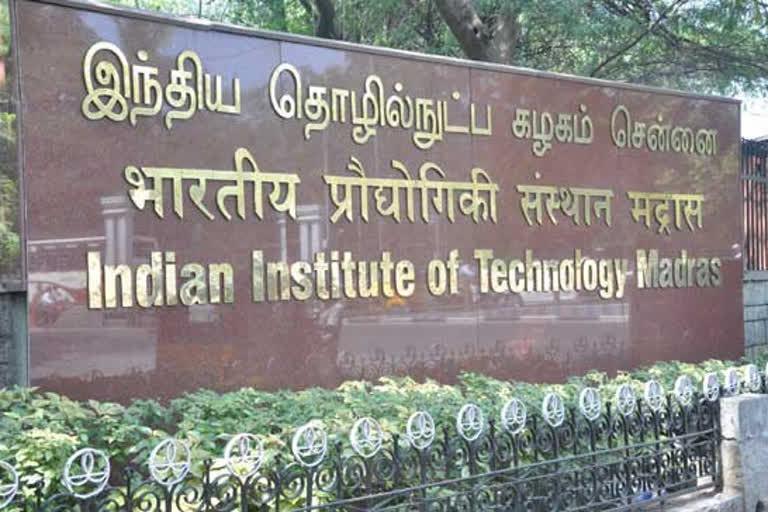Chennai:Indian Institute of Technology Madras and United Kingdom researchers have developed a paper-based sensor that can detect antimicrobial pollutants, which induce antimicrobial resistance in water bodies. This sensor works on a 'see and tell' mechanism that makes it logistically effective for wide implementation.
The scientific community is focused on Antimicrobial Resistance (AMR), which could possibly become a worldwide health crisis involving deadly pathogens. Water bodies are the major source for the dissemination and transfer of AMR. Periodic monitoring of antimicrobial pollutants and antibiotic-resistant genes is the key to assess the current situation of AMR in India.
IIT Madras, UK researchers develop paper-based sensor to detect AMR triggering pollutants In these conditions, low-cost and field-deployable sensors to detect pollutants in water bodies could be a viable tool for environmental surveillance.
This research was first reported through a journal publication in Nature Scientific Reports and was acclaimed as one of the top 100 in Chemistry.
Also read:COVID-19: IAF transports over 180 cryogenic oxygen containers
This research was funded by the Department of Science and Technology (DST), Government of India in bilateral collaboration with UK's Natural Environment Research Council and Engineering and Physical Sciences Research Council (EPSRC) under the 'Indo UK Water Quality Research Programme.'
In IIT Madras, this research was led by Prof S Pushpavanam, Institute Chair Professor, Department of Chemical Engineering, IIT Madras and Dr T Renganathan, Associate Professor, Department of Chemical Engineering, IIT Madras.
Elaborating on the unique aspects of this research, Prof. S. Pushpavanam, Institute Chair Professor, Department of Chemical Engineering, IIT Madras, said, "Paper-based sensor offers an affordable platform for various point-of-care applications as they support fluid flow based on a wicking action and governed by capillary forces. This eliminates the requirement of pump-to-flow liquids. We have come up with a novel method for the fabrication of paper-based devices using a commercial laser printer."
Speaking about the technical aspects of this sensor, Pushpavanam said, "We use a porous substrate such as paper, which enables us to use standard software to print required designs on it. Once printed, the printer ink is deposited on the surface of the paper. When heated, this penetrates the thickness of the paper and forms a hydrophobic barrier through which liquid cannot pass. This allows us to direct the flow of liquid in preferential directions through the areas which are not printed and are hydrophilic."
The practical applications of these sensors include:
- Environmental monitoring
- Food safety analysis
- Health care monitoring
Also read:SC to hear petition to pause Central Vista project
Speaking about the current Indo-UK project, Dr T. Renganathan, associate professor, Department of Chemical Engineering, IIT Madras, said, "We have used these fabricated devices for the detection of antibiotics such as ciprofloxacin, biocides triclosan and heavy metals such as chromium, copper and lead. These devices can be used for antimicrobial resistance surveillance in water bodies."
Highlighting how this sensor is unique compared to existing technology, Dr T Renganathan added, "We use a normal laser printer without any modification and it offers high resolution and accuracy. The hydrophobic barriers are compatible against organic solvents and high temperature. The developed laser printed paper-based microfluidic sensor is a viable option for large-scale manufacturing and enables routine monitoring of pollutants in both developed and resource-constrained regions."
The novel strategy for low-cost fabrication of the robust Laser Printed-Microfluidic Paper-Based Analytical Sensors developed by IIT Madras will help to detect antimicrobials easily in the parts per million range. It will also help understand the relationship between AMR and AMR-triggering pollutants and assist policymakers in framing solutions to tackle the grand societal AMR challenge.
The novel strategy of combining adsorption-based pre-concentration using reagents that undergo a measurable colour change enabled parts per billion level detection of pollutants. The process utilizes the easily available laser printer and hence offers tremendous potential for large-scale sensor fabrication. It could enable community-driven microfluidics and facilitate mass surveillance.
